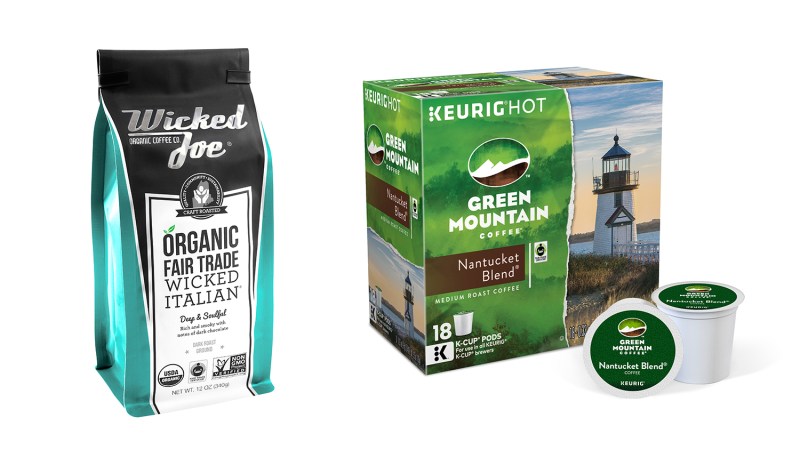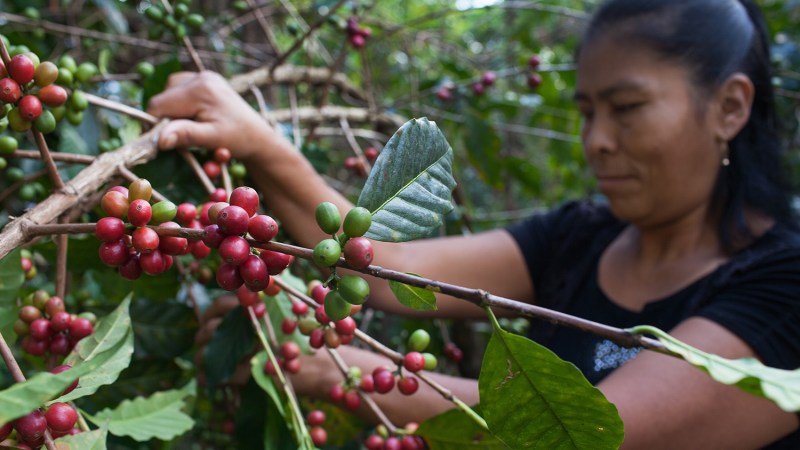This year, celebrations of International Coffee Day start on Friday, September 29 and culminate on Sunday, October 1, resulting in probably the most alert weekend of 2017. It’s also a great time to join Fair Trade USA’s #JustOneCup campaign and support coffee farmers across the globe.
The coffee industry is booming — valued at something around $26 billion dollars — so you’d think coffee farmers would be feeling the benefits of our addiction. Unfortunately, that’s not the case. Today’s farmers are actually making less money than their grandparents. Plus, climate change is drastically reducing the amount of land that can grow coffee; The Climate Institute estimates a decrease as staggering as 50 percent by 2050. Given that 80 percent of American adults drink coffee, it’s time we get serious about being responsible consumers.

This year, Fair Trade USA is asking everyone that’s anxiously jiggling a leg in anticipation of International Coffee Day to make just one single cup of their daily coffee intake Fair Trade Certified. For each pound of Fair Trade coffee sold, the farmers who produce it earn an additional $0.20 over the sale price. Americans enjoy an estimated 400 million cups of coffee per day, and if every cup of that joe was Fair Trade, thanks to that $0.20, then $2 million would go directly to the farmers and their communities.
Fair Trade USA partners with farmers and producers around the world to ensure products are made ethically, helping more than 1.2 million people in 70 developing countries. This effort includes guaranteeing a minimum price floor, safe working conditions, and stable wages; fostering direct trade to keep unnecessary middlemen from syphoning off money; engaging the community through schools, scholarships, and leadership training; and developing environmentally sustainable practices. Fair Trade certifies vegetables, chocolate, teas, honey, spices, wine, flowers, sugar, even apparel — and, of course, coffee.

By choosing a cup of Fair Trade coffee, you’re helping invest millions of dollars into things like education and healthcare. For every pound of Fair Trade coffee sold, the farmers receive an additional $0.20 over the sale price, which goes to the organization’s Community Development Fund. Each community is in complete control of the money. A cooperative in Colombia established dental clinic that provides free or discounted services to farmers and their families. In Peru, another cooperative funded workshops and training for women to have a bigger role and voice in the community. Fair Trade coffee is hard working coffee.
It’s remarkably easy to make the Fair Trade choice too. You don’t have to go to some obscure health food store — Fair Trade products are all over the place. Hell, even Keurig Green Mountain coffee is Fair Trade. So is Brooklyn Roasting Company, Death Wish Coffee, Equator Coffee, Barrie House, Mr. Espresso, Tony’s Coffee, Reunion Island Coffee, and tons more.
Choosing Fair Trade coffee is a delicious, easy decision that positively impacts millions of people, which seems like a damn good way to celebrate the drink and the people who make our mornings possible.
Images courtesy of Fair Trade USA.


